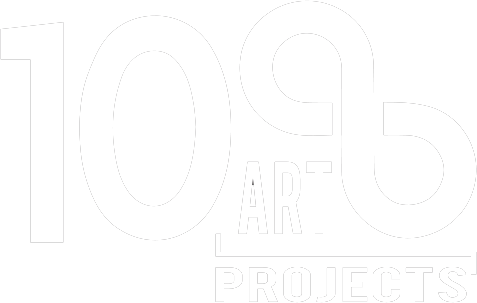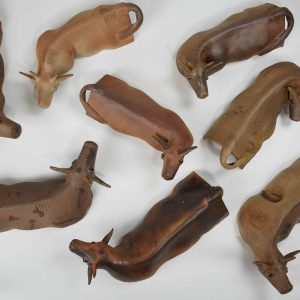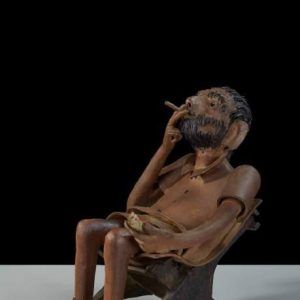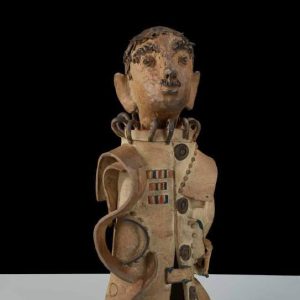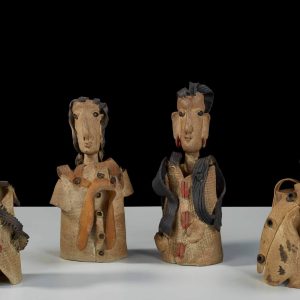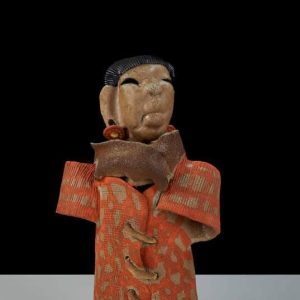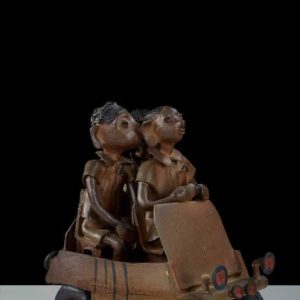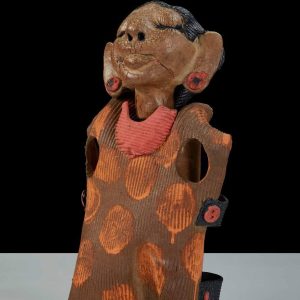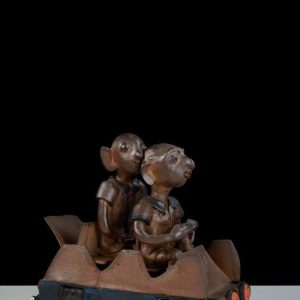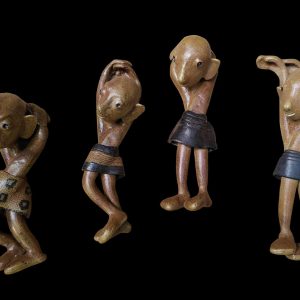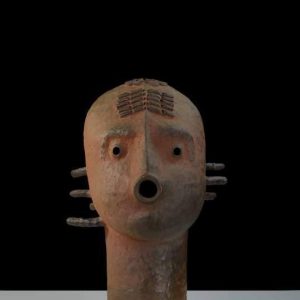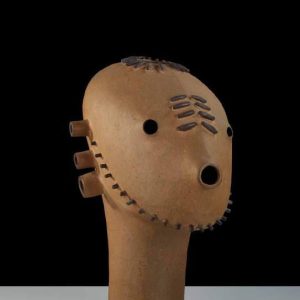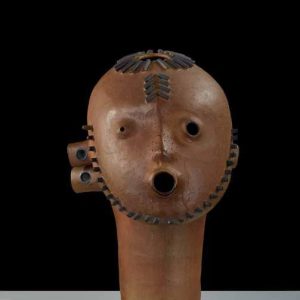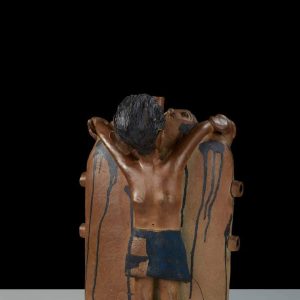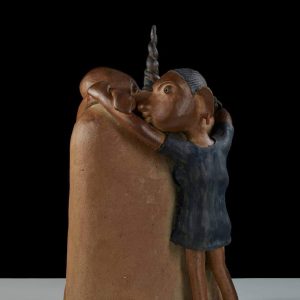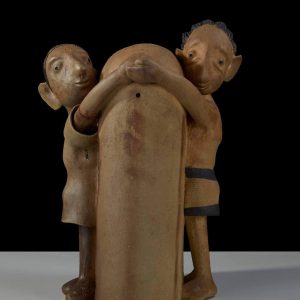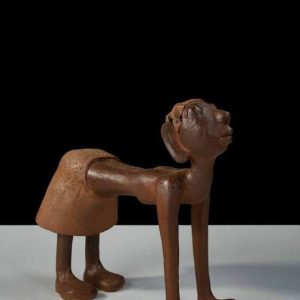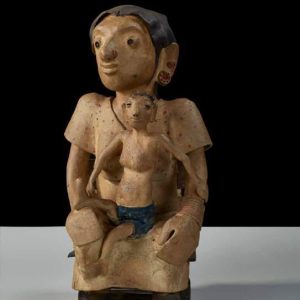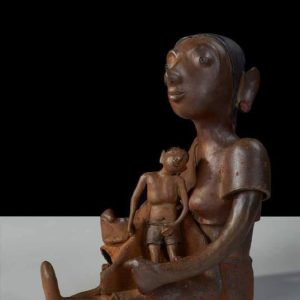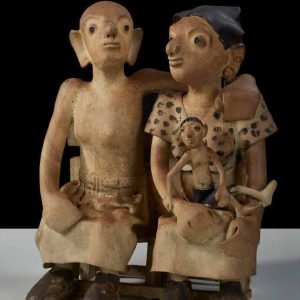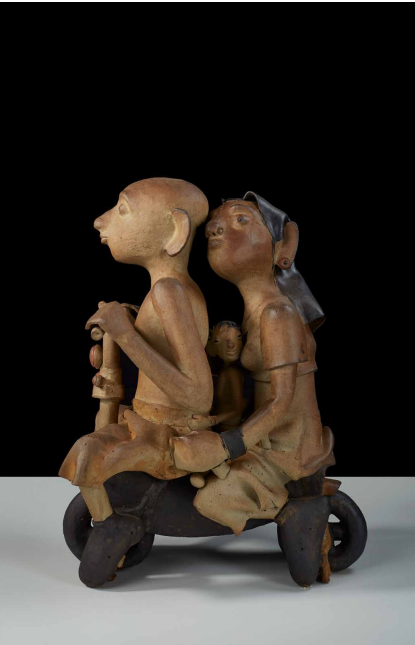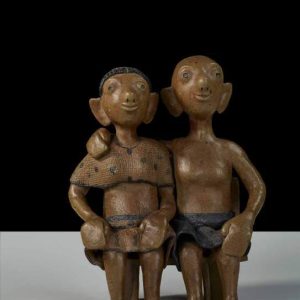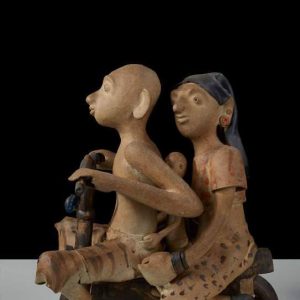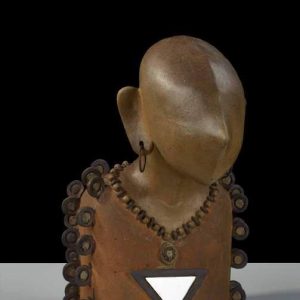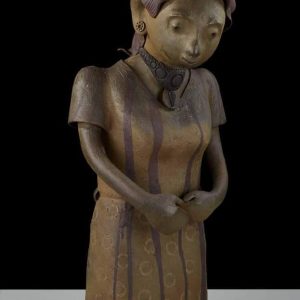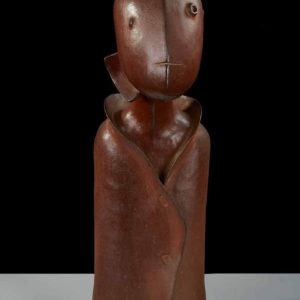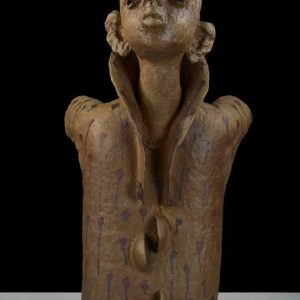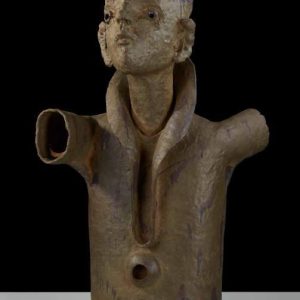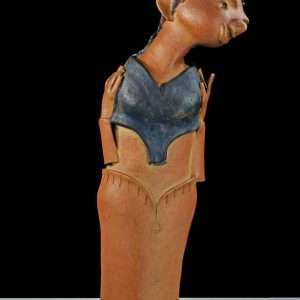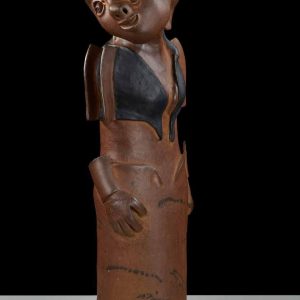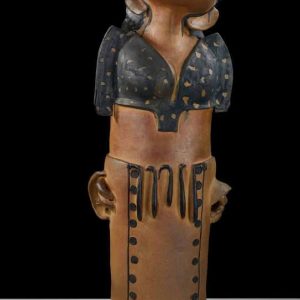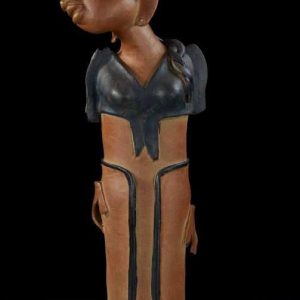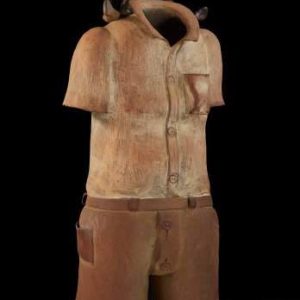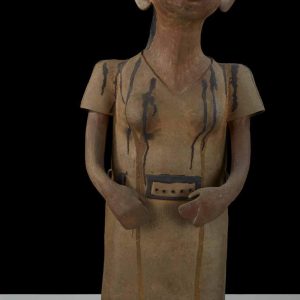Reghu was born in 1959 in Kilimanoor, Kerala. He studied sculpture at the College
of Fine Arts,Thiruvananthapuram. Though he began with stone as a medium, his
sensibility gained direction after interacting with Elizabeth and Laurie Baker.
Their Gandhian philosophy of working with indigenous materials influenced
him greatly. He shunned expensive materials like marble or bronze in favour of
humble terracotta. Another huge influence in his life was J. Swaminathan. As a
final year student, Reghu participated in an All India Students’ Camp organized
by the Roopankar Museum of Fine Arts at Bharat Bhavan, Bhopal. Swaminathan
who was the Director at that time spotted Reghu’s talent and awarded him a
scholarship for two years to work there.
Reghu remained at Bharat Bhavan for 15 years, where he shifted to ceramic and
terracotta art. Swaminathan in his persona of a ‘tribal’ artist, voiced the cause of
the dispossessed, and this further inspired Reghu’s works. Although Reghu was
traditionally a potter, he abandoned pottery and turned to ceramic sculpture.
This journey in form from “the pot to the head” is marked by a certain fluidity.
The convex curves of the pot now assume the contours of the head and the
inanimate and utilitarian object is fused with spirit of a living image. He showed
an intimacy using the tactile processes of modeling with clay and using the
potter’s wheel. The medium and method reflected his familiarity with a rural
lifestyle. Using the processes of hollow-modeling, slabbing, folding, coiling
and pinching, Reghu began to evolve a racial type that mingled Dravidian and
African facial features – bulging eyes, thick lips, and cabbage ears mingle both
Dravidian and African facial features, evocative of an ancient civilization. Thereby
transcending his well-defined local images to convey a world of magic, myth,
and bucolic innocence. From here, he moved to his present preoccupation, an
exploration of the human form.
WORKS
Works
ABOUT THE ARTIST
Reghu was born in 1959 in Kilimanoor, Kerala. He studied sculpture at the College
of Fine Arts,Thiruvananthapuram. Though he began with stone as a medium, his
sensibility gained direction after interacting with Elizabeth and Laurie Baker.
Their Gandhian philosophy of working with indigenous materials influenced
him greatly. He shunned expensive materials like marble or bronze in favour of
humble terracotta. Another huge influence in his life was J. Swaminathan. As a
final year student, Reghu participated in an All India Students’ Camp organized
by the Roopankar Museum of Fine Arts at Bharat Bhavan, Bhopal. Swaminathan
who was the Director at that time spotted Reghu’s talent and awarded him a
scholarship for two years to work there.
Reghu remained at Bharat Bhavan for 15 years, where he shifted to ceramic and
terracotta art. Swaminathan in his persona of a ‘tribal’ artist, voiced the cause of
the dispossessed, and this further inspired Reghu’s works. Although Reghu was
traditionally a potter, he abandoned pottery and turned to ceramic sculpture.
This journey in form from “the pot to the head” is marked by a certain fluidity.
The convex curves of the pot now assume the contours of the head and the
inanimate and utilitarian object is fused with spirit of a living image. He showed
an intimacy using the tactile processes of modeling with clay and using the
potter’s wheel. The medium and method reflected his familiarity with a rural
lifestyle. Using the processes of hollow-modeling, slabbing, folding, coiling
and pinching, Reghu began to evolve a racial type that mingled Dravidian and
African facial features – bulging eyes, thick lips, and cabbage ears mingle both
Dravidian and African facial features, evocative of an ancient civilization. Thereby
transcending his well-defined local images to convey a world of magic, myth,
and bucolic innocence. From here, he moved to his present preoccupation, an
exploration of the human form.
